Töltött Káposzta / Stuffed Cabbage Rolls

Stuffed cabbage rolls are truly iconic dish, representative of the Szék region of Romania. These are often prepared and served at family gatherings—baptisms, weddings, and funerals. It also sometimes appears at Easter and Christmas celebrations.
As the recipe requires a bit of work, it is generally carried out by multiple women helping in the kitchen, especially when the dish is made in large quantities.
The recipe prepared by Istvánné Zsoldos at the Foodways Demonstration area of the 47th annual Smithsonian Folklife Festival Hungarian Heritage program includes dill and summer savory, which are particularly characteristic of the region and especially popular in the summertime. It also includes smoked Hungarian bacon, which adds a very subtle bit of charred, smokey flavor to the dish.
The demonstration was livened up by Mrs. Dezső Erzsébet and Klára Serestély singing folk songs traditional to the region. The pretty little stuffed cabbage rolls are best when served with a slice of crusty white country bread and a dollop of sour cream over the top.
Recipe by Istvánné Zsoldos
Ingredients (For 10 servings)
2 lb ground pork
2 cups rice
2 heads of white onion
6½ oz sunflower oil
½ cup of water
3 heads of cabbage*
salt, pepper
fresh dill
½ lb smoked bacon
2 tbsp paprika
1 tbsp sour cream
1 qt tomato juice
1 lemon
2 cubes of bouillon
*When the cabbage is cooked, the leaves should be completely translucent, with the filling visible through them.
Preparation
- Set a large pot of water to boil. Once it boils add a pinch of salt and the juice of one lemon.
- Cut out the tough core of the cabbage out, and add the cabbage (still whole) to the boiling water.
- Once the cabbage cooks, it will fall apart, leaf by leaf. Using tongs, pull these leaves off and set them in a strainer to rest.
- Collect the leaves and, cutting out the tough vein in the middle, slice them into roughly 4-by-4-inch sheets. Two to three sheets can be cut from one leaf of cabbage.
- Combine a half quart of tomato juice, two cups of the hot water that the cabbage leaves cooked in, and one bouillon cube in a small bowl until the bouillon dissolves. Set aside.
- Peel and very finely chop two onions.
- Put these into a pot with 6.5 ounces of vegetable oil, so that the oil covers the onion. Cook these until the onion softens and becomes translucent. Add about 1.5 ounces of water. Don’t let the onions touch direct heat. They should not be caramelized but cooked.
- Layer fresh summer savory (or two to three tablespoons of the dry herb) and three tablespoons of fresh dill on the bottom of a large pot. On top of these, lay enough cabbage leaves one by one to cover the herbs. Add three to four thin slices of the smoked bacon and pour a quarter cup of oil onto the surface.
- In a medium bowl, combine the pork, uncooked rice, salt, pepper, cooled down cooked onion, two tablespoons of paprika, and about a half quart of tomato juice. Also add one dissolved cube of bouillon and mix it all together.
- Taking a cabbage leaf, add about two tablespoons of the meat-rice mixture in the center of the sheet and wrap it up into roll, a bit like a miniature burrito. Place it into the pot, on top of the slices of bacon.
- Repeat this with as many cabbage leaf rolls as it takes to form an entire layer. Place them close together, side by side. This will help them stay wrapped up tight during the cooking process. Stack layers on top of each other.
- When all the stuffed cabbage logs have been laid into the pot, chop the remaining bit of cabbage (the tougher, cooked stems and leaves too small to wrap). Sprinkle these over the stuffed rolls. These will help keep the steam in, allowing the stuffed cabbage to cook faster. Also, we do not want to waste anything!
- Pour the tomato juice, water, and bouillon mixture over the top of the cabbage.
- Cover the pot and bring to a boil. Once at a boil, reduce heat to medium and cook for sixty to ninety minutes, until the cabbage leaves become completely translucent.
- Serve with a side of bread, topped with sour cream.
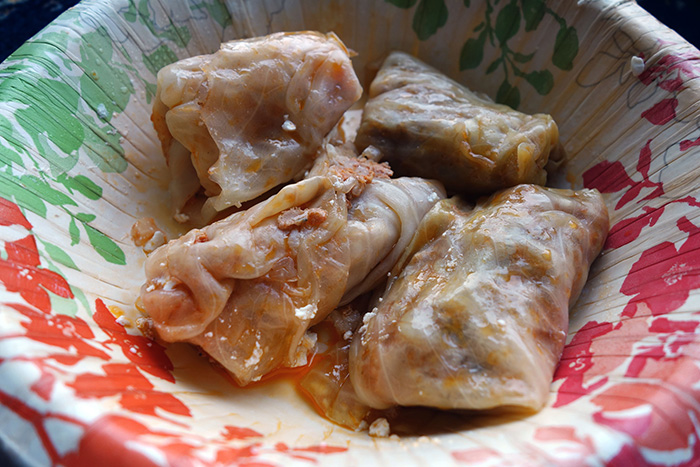

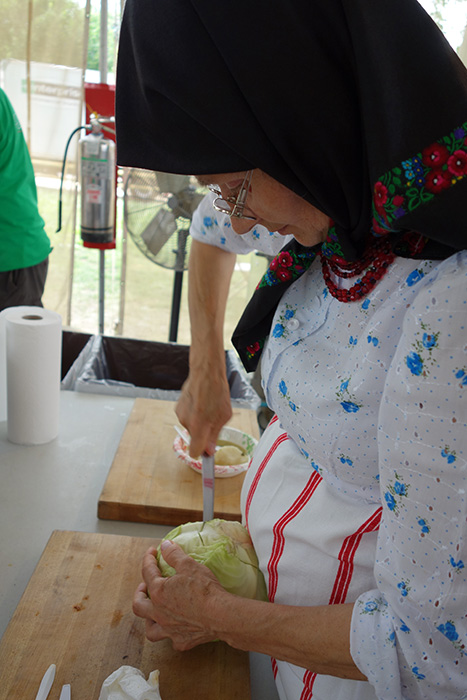
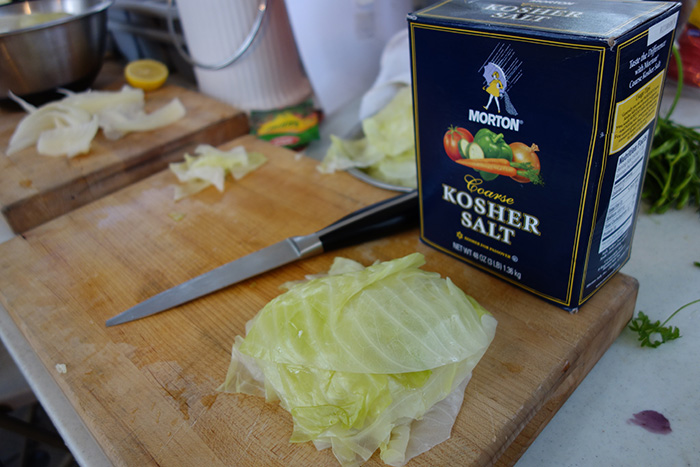

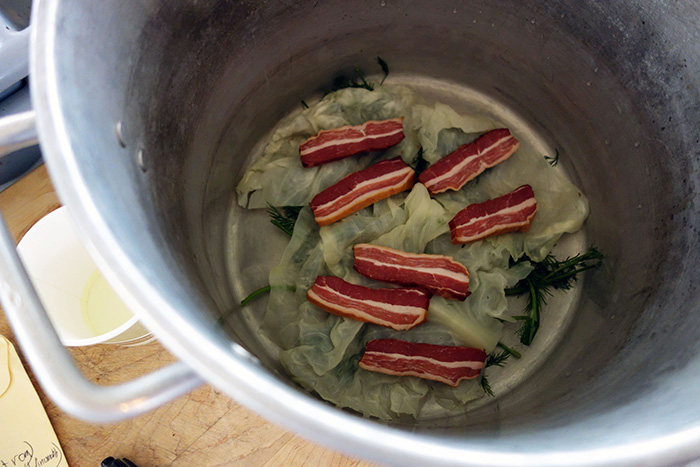
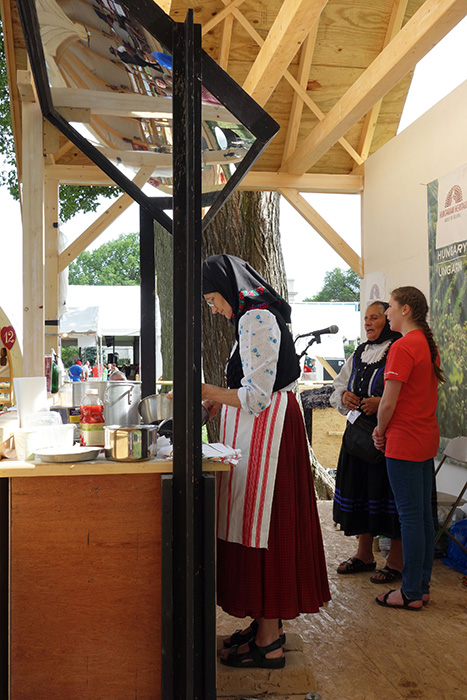
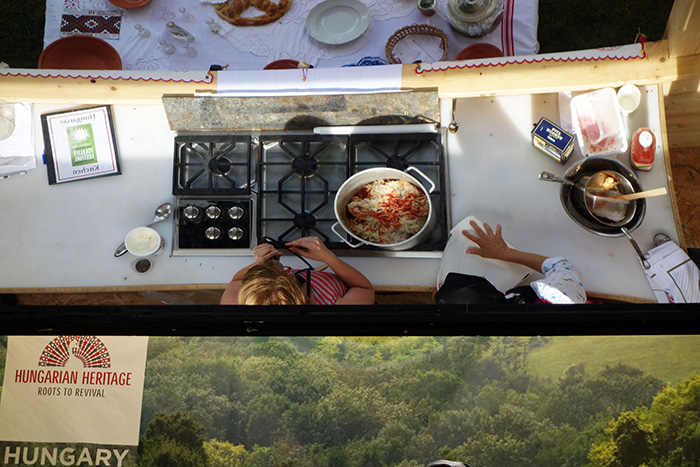
Lili Kocsis is the Participant Assistant for the 2013 Hungarian Heritage Festival program. She graduated from Harvard University in 2011 with a B.A. in linguistics. She dedicates her spare time to purposeful travel, food photography, and writing about regional cuisine.

